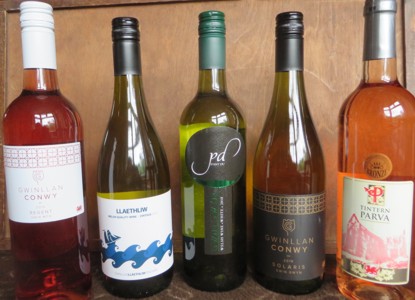|
Wales saw the end of one viticultural era, and was early to join the next. The Marquis of Bute's vineyard at Castell Coch saw the growth of Gamay Noir and Mille Blanche from 1875, and it
flourished. By 1887, 3000 bottles of wine were being produced. Sadly, the sugar shortages of World War I made for difficulties in wine-making, and the last vines were uprooted in 1920. |
|
In 1973, the Dixons at Llandegfedd heralded in the new viticultural age. This was followed by John Bevan who planted 3 acres at Croftta, near Pontyclun. Sadly John died in the 1990's but hopefully, his sons will
revive it as a producer of sparkling wine. The oldest surviving vineyard, Glyndwr at Cowbridge, was planted by the Norris Brothers in 1983.
Today, vineyards have spread throughout the coastal areas of the Principality, most recently in Ynys Mon (Anglesey). Ancre Hills and Cwm Deri
(now largely devoted to fruit wines) have their own wineries but most of the rest of the southern vineyards rely on Three Choirs at Newent or Halfpenny Green in Staffordshire for wine-making.
Potential vineyard tours await tourists in the south (Sugar Loaf, Llanerch and Parva Farm). Hopefully Ynys Mon's expanding industry will emulate it.
Iechyd da!
Vineyards with shops | Vineyards with accommodation | On-line Sales
|
| Ancre Hill | Llanerch - Luxury Hotel | Conwy |
| Glyndwr | Glyndwr[Self Catering] | Glyndwr |
| Parva Farm | Jabajak- Whitland | Llaethliw |
| Pant Du | Sugar Loaf [Holiday Cottage] | Pant Du |
| Llanerch | | Sugar Loaf
| | Glyndwr | | White Castle |
| Sugar Loaf | | |
| Red Wharf Bay | | |
PLEASE NOTE - For the duration of the Covid-19 crisis, please check with the vineyard as to whether they can receive visitors before travelling
Vineyard Association of Wales
Wales has its own vineyards association currently led by Robb Merchant of White Castle Vineyard in Monmouth, from whom information can be obtained. See also the Welsh Vineyards Association web site
|

Association members at the 2016 AGM at Conwy Vineyard |

|


